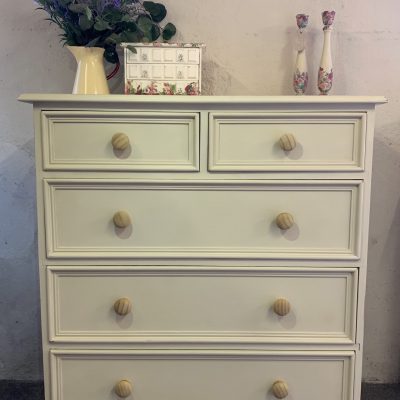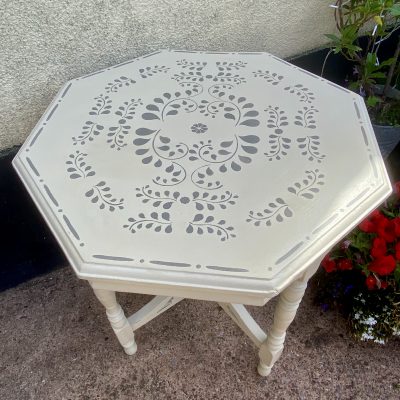We tend to distress much of the furniture we create. Yes – after carefully painting a piece, we then knock, sand or wipe some of the paint back off. How much very much depends on each individual piece but the overall aim is the same. We want the piece to look loved. A piece of furniture that has been around or generations. Some of the paint has been worn off if areas that get rubbed by hands, or knocked from being moved. It gives age and depth to a piece of newly painted furniture. Someone asked me how we know where to distress. The answer is touch it. Feel where it would be rubbed and knocked. The edges of legs, the tops and corners of drawers.
Distressing can also be used to bring an added dimension to a piece. Over the years, furniture would have been painted in the ‘fashionable’ colour. The rich tones the Victorians loved, or the mutted greys and creams found in the French chateaux. You can bring this ‘layered’ look to life with distressing. It allows you to choose a palette of colours and have each visible through the layers. This takes time, but is well worth the effort.
You can distress a piece of furniture as much as you want, but I have to be honest I am not a huge fan of too much. In the right setting, a heavily distressed piece can look fab, but the important factor is the right setting. If not, it just looks like something that needs to be painted. Don’t be afraid to distress. If you feel you have taken too much off – just paint xx




















